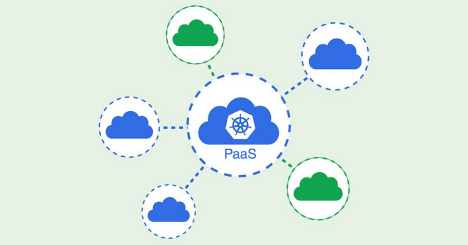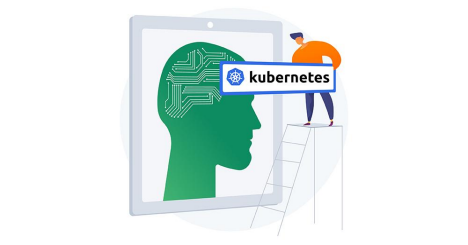The use of cloud software to develop, deploy, and monitor applications on cloud infrastructure has become central to software development. Increased demand for highly available, resilient, and scalable applications has led to software containerization. Organizations are moving their workloads from physical hardware or virtual machines (VMs) to containers for efficiency, portability, and better resource utilization. Kubernetes is a key component of cloud computing and its popularity across enterprises of all sizes is ever-growing. Kubernetes offers the best DevOps practices, and automation of deployments, and supports microservice architectures. For this reason, it has become a standard container orchestration platform for the effective management of applications. Without a doubt, organizations migrating to the cloud should take advantage of the fully managed scalable Kubernetes as a Service (KaaS) environments many cloud providers offer.
As technology keeps changing every day, Kubernetes keeps growing as it adapts to new cloud-native requirements. It’s crucial that software developers, system architects, cloud engineers, and other technology stakeholders stay informed of the new trends to make better decisions. Here is a list of the latest Kubernetes trends to look out for.

1. Accelerated Migration to Cloud Computing
Managing multi-cloud and hybrid cloud has been a significant barrier to migrating workloads from on-premise into the cloud. The increased shift towards cloud computing is a promising trend reflected in Kubernetes’s ability to employ containers to accelerate software delivery through its multi-cloud capabilities. Kubernetes acts as a container management and orchestration standard, enabling organizations to deploy applications in various environments.
Cloud-native technology uses various tools for developing applications that run everywhere, including on-premises, hybrid environments, public clouds, or a combination of both. The ability to host nodes in multiple clouds and increase availability in different regions shows Kubernetes’s flexibility to provide diverse configuration options for cloud migration.
As the transfer of workloads to the cloud accelerates, Kubernetes offers new tools for simplifying the shift to a container-native environment. Kubernetes is a single software package with libraries and configuration files that allow you to abstract and isolate operations away from the host’s operating system. Despite the isolation, containerс can still function seamlessly across any cloud or platform. The benefit of containerization in cloud migration is that if you encounter errors in one container during cloud migration, it doesn’t affect other containers. The microservice infrastructure isolates the container, making it easier for developers to identify and correct technical errors. This reduces downtime and disruption issues in other containers during cloud migration. You can also enjoy other benefits of Kubernetes in simplifying cloud migration, including ease of management, fault isolation, and enhanced security.
2. Expansion of PaaS Оptions
Kubernetes’s support for serverless workloads is a key trend in the expansion of Platform-as-a-Service (PaaS) options. PaaS offers a flexible, cost-effective cloud platform for building, running, and monitoring applications. On-premise platforms are considered expensive and result in a waste of resources. You have to buy additional resources in anticipation of a traffic surge, while much of the resources are unused during low traffic. PaaS provides the additional scaling capacity you need during traffic spikes.

Kubernetes blends the ease of PaaS with flexibility and scalability, enabling portability between infrastructure providers. With the container management and orchestration platform, you can easily automate the installation and scaling of workloads and services. A Kubernetes platform allows to scale of containerized applications, monitor functions, and roll out app versions. CloudSigma’s PaaS integration and scaling capabilities can simplify your cloud migration using customizations that take advantage of load balancing, cloud scalability, and microservices infrastructure.
3. A Shift Towards DevSecOps
DevSecOps is short for Development, Security, and Operations. It involves implementing security within the development and operations pipelines of software applications. DevSecOps are a crucial part of Kubernetes that allows the integration of security protocols in each stage of the software development cycle to secure containerized environments properly. As you migrate into a public cloud environment, it’s even more important to automate your processes to reduce mistakes and time spent managing operations manually.
You can employ Kubernetes in a DevSecOps toolchain to ensure configurations, security implementations, and infrastructures are consistently managed across multiple cloud environments. Given that the cloud-native tool follows open-source standards, it is possible to integrate it with various security toolchains using CI/CD pipelines.
4. Kubernetes is Central to Edge Computing
Edge computing places applications closer to data sources and users. It reduces your application’s response time and latency, leading to improved user experience. Bringing computation to the edge of the end-user reduces the large amount of long-distance communication that takes place between a user and server. As a result, there has been a growing trend of Kubernetes adoption in edge computing. Edge computing is evolving fast, prompting companies to support application components using containers across multiple clouds in different edge locations. Kubernetes platforms are among the best choices for running workloads at the edge.
Kubernetes orchestration helps you distribute workloads across edge locations to meet real-time traffic demands. With the Kubernetes platform, you can instantly deploy applications and services closer to end users. Enterprises that run Kubernetes platforms have extended capabilities of faster and more consistent application deployments that place them at the edge. Service mesh technologies are not fast and lightweight enough to function in most edge computing environments. In contrast, containers are smaller than a VM in capacity, enabling you to run more containers with the same compute capacity as a single VM. Containers are portable and lightweight, making them suitable for the future of edge computing. You can deploy applications uniformly and consistently across clouds and platforms without the need for re-architecting.
5. Kubernetes Goes Machine Learning
Furthermore, Kubernetes is becoming a promising choice for serving Machine learning (ML) workloads. In combination with ML, Kubernetes is emerging as a new technology ecosystem that will help you make better analytical decisions and improve customer interactions. Kubernetes comes with data management and infrastructure abstraction as powerful capabilities that support ML. Its abstract capabilities enable the distribution and deployment of applications from the infrastructure layer, making it portable. You can simply and quickly manage
ML-based containerized applications across multiple environments, databases, and libraries.

Machine learning pipelines are made up of multiple stages, such as data collection, processing, and analysis, as well as other executions that include testing models. With Kubernetes, you can use scaling, automation, and CI/CD pipelines to establish repeated processes. Kubernetes’s open-source standard gives you the opportunity to integrate diverse toolchains for configuring and managing infrastructure across multiple machine-learning environments.
Conclusion
With all the trends described above, it is not surprising that Kubernetes is widely adopted as a de facto container orchestration standard for machine learning, edge computing, best DevSecOps practices, managing multi-cloud, and expanding PaaS options. CloudSigma’s pre-packaged, scalable Managed Kubernetes Environments allow for easier cloud application deployment and automatic installation with the pay-per-use pricing model.
Follow Techdee for more!





